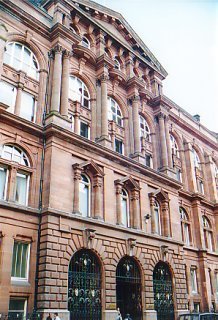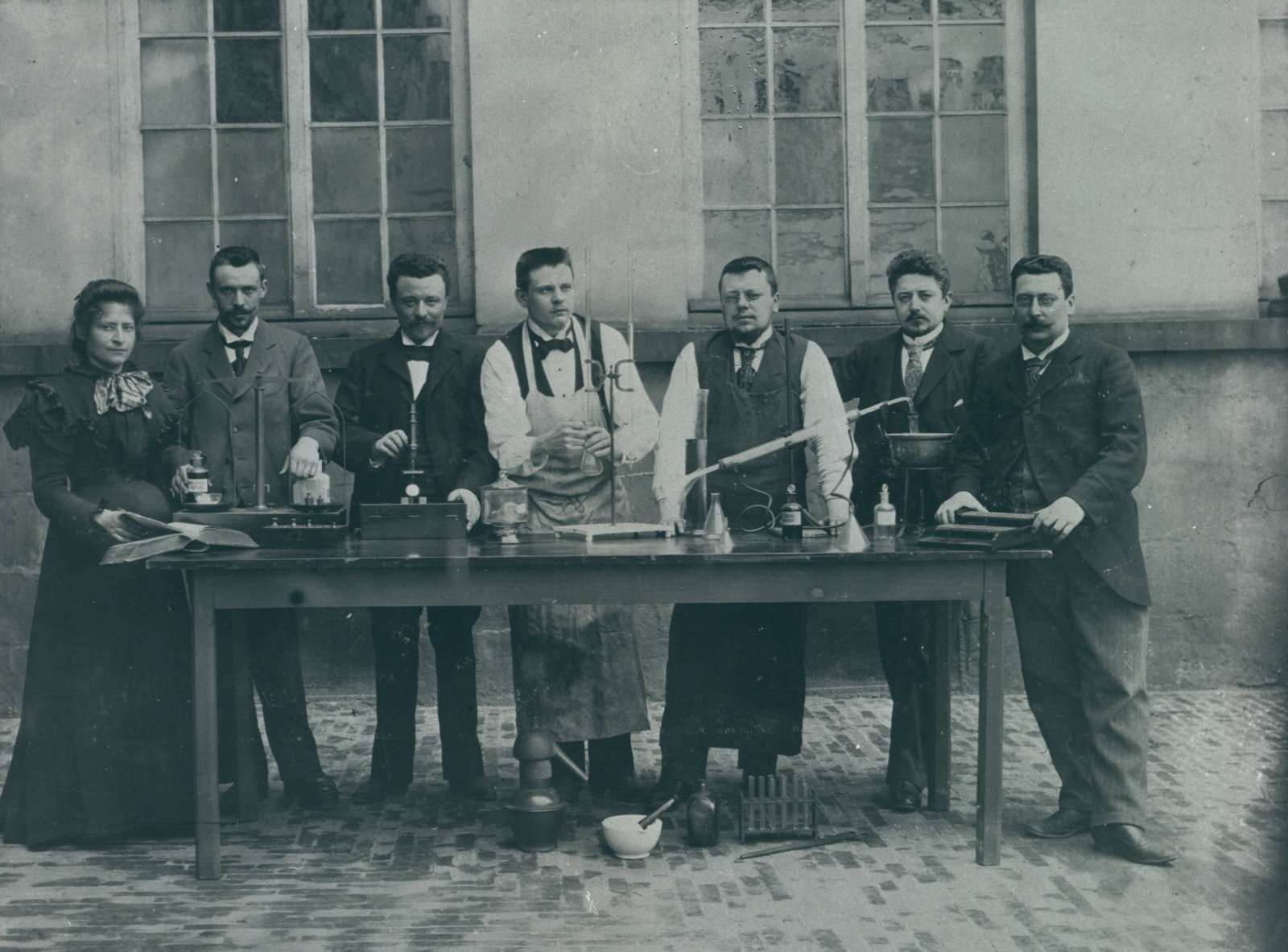|
Wave Energy Scotland
Wave Energy Scotland (WES) is a technology development body set up by the Scottish Government to facilitate the development of wave energy in Scotland. It was set up in 2015 and is a subsidiary of Highlands and Islands Enterprise (HIE) based in Inverness. WES manages a number of projects resulting from its pre-commercial procurement funding calls. Inception The Scottish Government took positive action to support the ailing wave energy sector in Scotland, following the demise of one of the leading developers Pelamis Wave Power. The Energy Minister Fergus Ewing announced an initial budget for the body of £14.3 million over 13 months at the RenewableUK conference in February 2015. Organisation objectives The original objectives for WES were set out by the Scottish Government as: * Seek to retain the intellectual property and know-how from device development in Scotland for future benefit; * Enable Scotland’s indigenous technologies to reach commercial readiness in the m ... [...More Info...] [...Related Items...] OR: [Wikipedia] [Google] [Baidu] |
University Of Strathclyde
The University of Strathclyde ( gd, Oilthigh Shrath Chluaidh) is a public research university located in Glasgow, Scotland. Founded in 1796 as the Andersonian Institute, it is Glasgow's second-oldest university, having received its royal charter in 1964 as the first technological university in the United Kingdom. Taking its name from the historic Kingdom of Strathclyde, it is Scotland's third-largest university by number of students, with students and staff from over 100 countries. The institution was named University of the Year 2012 by Times Higher Education and again in 2019, becoming the first university to receive this award twice. The annual income of the institution for 2019–20 was £334.8 million of which £81.2 million was from research grants and contracts, with an expenditure of £298.8 million.. History The university was founded in 1796 through the will of John Anderson, professor of Natural Philosophy at the University of Glasgow, who left i ... [...More Info...] [...Related Items...] OR: [Wikipedia] [Google] [Baidu] |
Organisations Supported By The Scottish Government
An organization or organisation (Commonwealth English; see spelling differences), is an entity—such as a company, an institution, or an association—comprising one or more people and having a particular purpose. The word is derived from the Greek word ''organon'', which means tool or instrument, musical instrument, and organ. Types There are a variety of legal types of organizations, including corporations, governments, non-governmental organizations, political organizations, international organizations, armed forces, charities, not-for-profit corporations, partnerships, cooperatives, and educational institutions, etc. A hybrid organization is a body that operates in both the public sector and the private sector simultaneously, fulfilling public duties and developing commercial market activities. A voluntary association is an organization consisting of volunteers. Such organizations may be able to operate without legal formalities, depending on jurisdiction, includin ... [...More Info...] [...Related Items...] OR: [Wikipedia] [Google] [Baidu] |
Renewable Energy Organizations
A renewable resource, also known as a flow resource, is a natural resource which will replenish to replace the portion depleted by usage and consumption, either through natural reproduction or other recurring processes in a finite amount of time in a human time scale. When the recovery rate of resources is unlikely to ever exceed a human time scale, these are called perpetual resources. Renewable resources are a part of Earth's natural environment and the largest components of its ecosphere. A positive life-cycle assessment is a key indicator of a resource's sustainability. Definitions of renewable resources may also include agricultural production, as in agricultural products and to an extent water resources.What are “Renewable Resources”? by A. John Armstrong, Esq. & Dr. Jan H ... [...More Info...] [...Related Items...] OR: [Wikipedia] [Google] [Baidu] |
Renewable Energy In The United Kingdom
Renewable energy in the United Kingdom contributes to production for electricity, heat, and transport. From the mid-1990s, renewable energy began to play a part in the UK's electricity generation, building on a small hydroelectric capacity. Wind power, which is abundant in the UK, has since become the main source of renewable energy. , renewable sources generated 40.2% of the electricity produced in the UK; around 6% of total UK energy usage. Interest has increased in recent years due to UK and EU targets for reductions in carbon emissions, and government incentives for renewable electricity such as the Renewable Obligation Certificate scheme (ROCs) and feed in tariffs (FITs), as well as for renewable heat such as the Renewable Heat Incentive. The 2009 EU Renewable Directive established a target of 15% reduction in total energy consumption in the UK by 2020. History Heat from wood fires goes back to the earliest human habitation of Britain. Waterwheel technology was ... [...More Info...] [...Related Items...] OR: [Wikipedia] [Google] [Baidu] |
Wave Power
Wave power is the capture of energy of wind waves to do useful work – for example, electricity generation, water desalination, or pumping water. A machine that exploits wave power is a wave energy converter (WEC). Waves are generated by wind passing over the sea's surface. As long as the waves propagate slower than the wind speed just above, energy is transferred from the wind to the waves. Air pressure differences between the windward and leeward sides of a wave crest and surface friction from the wind cause shear stress and wave growth. Wave power is distinct from tidal power, which captures the energy of the current caused by the gravitational pull of the Sun and Moon. Other forces can create currents, including breaking waves, wind, the Coriolis effect, cabbeling, and temperature and salinity differences. As of 2022, wave power is not widely employed for commercial applications, after a long series of trial projects. Attempts to use this energy began in 1890 or earlier, ma ... [...More Info...] [...Related Items...] OR: [Wikipedia] [Google] [Baidu] |
Edinburgh International Conference Centre
The Edinburgh International Conference Centre (EICC) is the principal convention and conference centre in Edinburgh, Scotland. Location The centre is part of the masterplanned Exchange District in the west end of the city, and was designed by the architect Sir Terry Farrell, who ran the project from his Edinburgh office, opened to manage this project and other work in the Exchange. Construction on the EICC began in March 1993 and the centre opened in 1995. It caters to around 200,000 delegates every year and generates in excess of £60m in revenue for the City of Edinburgh. An extension opened in 2013 at a cost of £85 million. Notable events In 1999 the annual General Assembly of the Church of Scotland was held in the EICC. The Church's Assembly Hall was being used by the Scottish Parliament at the time. The Commonwealth Heads of Government Meeting 1997 (CHOGM) was held in the EICC. To commemorate this occasion, the Clydesdale Bank issued a special commemorative £20 note. ... [...More Info...] [...Related Items...] OR: [Wikipedia] [Google] [Baidu] |
Pollock Halls
Pollock Halls of Residence is the largest halls of residence for the University of Edinburgh, located in St Leonard's, Edinburgh, Scotland, near the foot of Arthur's Seat. The complex of buildings houses more than 2,000 undergraduate students during term time, and is available to the public as bed and breakfast-style accommodation outside of the teaching term. While some of the buildings date from the 19th century, the majority of Pollock Halls dates from the 1960s and early 2000s. Pollock Halls are located on the edge of Holyrood Park, southeast of the centre of Edinburgh, and from the university's central area around George Square. History The two original buildings on site were St Leonard's Hall and Salisbury Green, which were built in the 19th century. Shortly after World War II, Sir Donald Pollock (Rector of the University from 1939 to 1945) gifted the site to the University of Edinburgh and Pollock Halls of Residence came into being. In the 1960s, a progr ... [...More Info...] [...Related Items...] OR: [Wikipedia] [Google] [Baidu] |
The University Of Bath
(Virgil, Georgics II) , mottoeng = Learn the culture proper to each after its kind , established = 1886 (Merchant Venturers Technical College) 1960 (Bristol College of Science and Technology) 1966 (Bath University of Technology) 1971 (university status) , type = Public , endowment = £8.1 million (2021) , budget = £289.5 million (2020–21) , chancellor = The Earl of Wessex , vice_chancellor = Ian H. White , academic_staff = 2,180 (2020) - including academic atypical staff , students = () , undergrad = () , postgrad = () , doctoral = , city = Bath, Somerset , country = England , coor = , campus = Suburban , free_label = , free = , website www.bath.ac.uk, logo = University of Bath logo.svg , affiliations = ACUAMBA EQUIS EUAUniversities UK Wallace GroupGW4 Sutton 30SETsquared The University of Bath is a public research university located in Bath, Somerset, United Kingdom. It received its royal charter in 1966, along with a number of other i ... [...More Info...] [...Related Items...] OR: [Wikipedia] [Google] [Baidu] |
The University Of Edinburgh
The University of Edinburgh ( sco, University o Edinburgh, gd, Oilthigh Dhùn Èideann; abbreviated as ''Edin.'' in post-nominals) is a public research university based in Edinburgh, Scotland. Granted a royal charter by King James VI in 1582 and officially opened in 1583, it is one of Scotland's four ancient universities and the sixth-oldest university in continuous operation in the English-speaking world. The university played an important role in Edinburgh becoming a chief intellectual centre during the Scottish Enlightenment and contributed to the city being nicknamed the "Athens of the North." Edinburgh is ranked among the top universities in the United Kingdom and the world. Edinburgh is a member of several associations of research-intensive universities, including the Coimbra Group, League of European Research Universities, Russell Group, Una Europa, and Universitas 21. In the fiscal year ending 31 July 2021, it had a total income of £1.176 billion, of which £ ... [...More Info...] [...Related Items...] OR: [Wikipedia] [Google] [Baidu] |
Ghent University
Ghent University ( nl, Universiteit Gent, abbreviated as UGent) is a public research university located in Ghent, Belgium. Established before the state of Belgium itself, the university was founded by the Dutch King William I in 1817, when the region was incorporated into the United Kingdom of the Netherlands after the fall of First French Empire. In that same year, he founded two other universities for the southern provinces as well, alongside Ghent University: University of Liège and State University of Leuven. After the Belgian revolution of 1830, the newly formed Belgian state began to administer Ghent University. In 1930, UGent became the first Dutch-speaking university in Belgium. Previously, French (and, even earlier, Latin) had been the standard academic language in what was ''Université de Gand''. In 1991, it was granted major autonomy and changed its name accordingly from ''State University of Ghent'' ( nl, Rijksuniversiteit Gent, abbreviated as ''RUG'') to its c ... [...More Info...] [...Related Items...] OR: [Wikipedia] [Google] [Baidu] |






